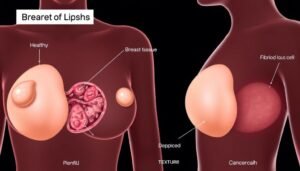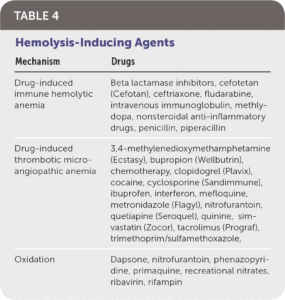Plaque Psoriasis_ Causes, Triggers, and Treatment Options
Plaque psoriasis is the most prevalent form of psoriasis, affecting 80–90% of individuals with the condition. It manifests as raised, red or pink skin patches covered with silvery-white scales. These plaques often have distinct borders and may cause itching or discomfort. Commonly appearing on the scalp, elbows, knees, and lower back, plaques can develop anywhere on the body. While no cure exists, long-term symptom relief is achievable through proper management.
Plaque Psoriasis vs. General Psoriasis
Psoriasis is a chronic autoimmune disorder where the immune system mistakenly attacks healthy skin cells, accelerating their production. This leads to a buildup of cells on the skin’s surface. Among the various types of psoriasis, plaque psoriasis is the most common, distinguished by its characteristic thick, scaly patches.
Symptoms of Plaque Psoriasis
The presentation of plaque psoriasis varies by individual and severity. Common symptoms include:
- Thick, red or pink plaques topped with silvery-white scales
- Symmetrical plaque distribution (e.g., on both knees or elbows)
- Itching, burning, or soreness in affected areas
- Pinpoint bleeding when scales are removed (known as the Auspitz sign)
- Cracks or fissures in plaques, especially on hands, feet, or thick patches
Plaques can range from small (1 cm) to large (several centimeters) and may merge to form extensive patches.
Causes and Triggers of Plaque Psoriasis
What Triggers Plaque Psoriasis?
Plaque psoriasis stems from an autoimmune response, though its exact cause remains unclear. Genetics and immune system dysfunction play significant roles, with environmental factors acting as triggers. Flare-ups, or periods of worsened symptoms, can be provoked by:
- Stressful events
- Skin injuries (e.g., cuts, burns, or sunburn)
- Smoking or excessive alcohol consumption
- Infections (e.g., strep throat)
- Cold, dry weather
- Certain medications
- Shaving or other skin trauma
Triggers vary among individuals, so identifying and avoiding personal triggers is key to managing flare-ups.
Genetic Factors
Psoriasis has a hereditary component. Specific genes increase the likelihood of developing the condition, but not all individuals with these genes will experience psoriasis, and some without them may still develop it.
The Role of Diet in Managing Plaque Psoriasis
As an inflammatory autoimmune condition, plaque psoriasis may be influenced by diet in some cases. Research suggests that individuals with psoriasis are more likely to have celiac disease, and those sensitive to gluten may benefit from a gluten-free diet. A 2018 study in the Journal of the American Academy of Dermatology recommends weight loss for overweight or obese individuals to reduce symptom severity, achieved through calorie reduction. However, no specific diet or nutrient has been universally proven to alleviate psoriasis symptoms.
Diagnosing Plaque Psoriasis
Clinical Evaluation and Testing
Diagnosis typically involves a healthcare provider examining the skin’s appearance and reviewing the patient’s medical history. In uncertain cases, a skin biopsy may be performed, where a small sample is analyzed in a lab to confirm the diagnosis.
Measuring Severity with PASI
The Psoriasis Area Severity Index (PASI) is used to assess the extent and severity of psoriasis. Scores range from 0 to 72, with higher scores indicating greater severity:
- 0–4: None to mild
- 5–10: Moderate
10: Severe
PASI evaluates redness, scaling, lesion thickness, and the percentage of affected body area. However, it does not account for the impact of psoriasis on quality of life.
Potential Complications of Plaque Psoriasis
Untreated or poorly managed psoriasis can lead to complications, including:
- Temporary skin discoloration
- Increased risk of obesity
- Type 2 diabetes
- Hypertension
- Other autoimmune conditions (e.g., Crohn’s disease, celiac disease)
- Psoriatic arthritis
- Eye disorders
- Mood disorders
- Cardiovascular disease
- Certain cancers
Early intervention can help mitigate these risks.
Treatment Options for Plaque Psoriasis
Over-the-Counter Treatments
Non-prescription products like moisturizers, creams, and lotions can hydrate dry skin and relieve itching.
Prescription Treatments
- Topical Corticosteroids: Reduce inflammation and slow skin cell turnover.
- Non-Biologics: Oral or injectable medications that modulate the immune system.
- Biologics: Administered via injection or IV, these target specific immune pathways to control symptoms.
Phototherapy
Conducted in a medical setting, phototherapy uses UVA/UVB light or lasers to slow skin cell growth and reduce inflammation.
Preparing for a Medical Appointment
When consulting a healthcare provider, provide a comprehensive medical and family history, including any known psoriasis cases. List all medications, supplements, and suspected triggers to help tailor an effective treatment plan.
Self-Care and Prevention Strategies
While psoriasis cannot be prevented, self-care can minimize flare-ups. Strategies include:
- Managing stress through relaxation techniques like meditation
- Avoiding known triggers
- Adhering to prescribed treatments
- Maintaining a balanced diet
Can Plaque Psoriasis Be Cured?
No cure exists for plaque psoriasis, but treatments can significantly reduce or eliminate symptoms. Many individuals experience periods of remission where symptoms improve or disappear. Collaborating with a healthcare provider to develop a personalized treatment plan is essential for optimal outcomes.
Risks of Untreated Plaque Psoriasis
If left untreated, the chronic inflammation associated with psoriasis can affect multiple organs, including the joints, eyes, heart, kidneys, and blood vessels. This may lead to serious conditions such as psoriatic arthritis, cardiovascular disease, or mood disorders. Early treatment is critical to controlling inflammation and preventing complications.
Conclusion
Plaque psoriasis, the most common type of psoriasis, is a chronic autoimmune condition characterized by red, scaly skin patches. Though incurable, it can be effectively managed with a combination of medical treatments, lifestyle adjustments, and trigger avoidance. By working closely with healthcare providers and adopting proactive self-care, individuals can achieve long periods of symptom relief and improve their quality of life.








